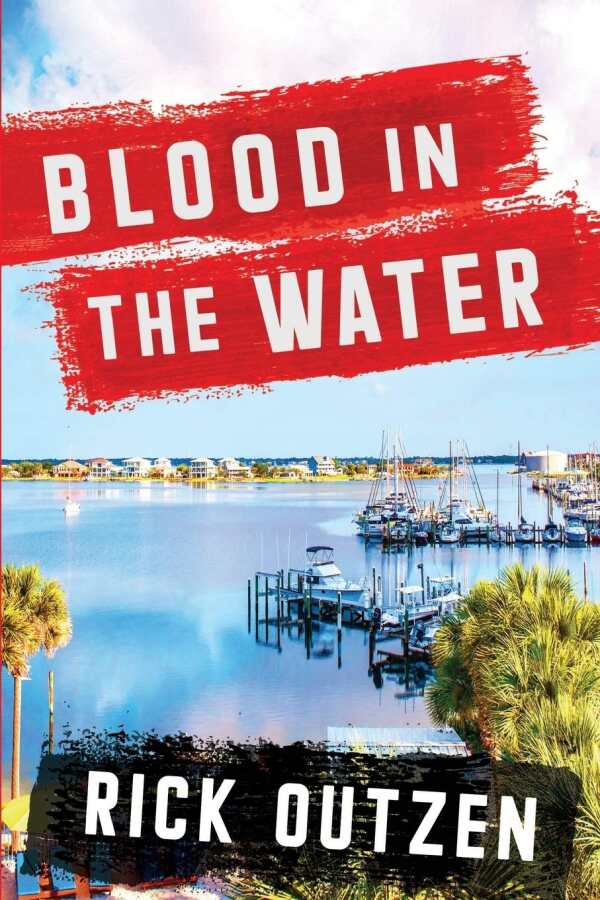
Blood in the Water
In the laugh-inducing Florida crime novel Blood in the Water, corrupt forces are pitted against a witty investigator.
Rick Outzen’s Blood in the Water is a sun-bleached mystery novel featuring a fun, funny, and cynical investigator in post-flood Florida.
Walker Holmes is a forty-something detective who works with his dog, Big Boy, by his side. Holmes also runs an alternative Pensacola newspaper, The Pensacola Insider, and uses it to deliver acerbic take downs of his favorite target, Sheriff Ron Frost, who has a new reason to dislike Holmes: Holmes and his newspaper have thrown their weight behind Alphonse Tyndall, Sheriff Frost’s electoral challenger.
But beyond the drama of the sheriff’s race, Pensacola enters into an unprecedented spiral of violence: a flood destroys the city, a bomb explodes at the newly renovated county jail, a car bomb goes off in Holmes’s Jeep, another private investigator is beaten into a coma, and Titus, one of Holmes’s best friends, is killed. Each event is the core of a chapter, helping the story move along. Conversations also help with this forward momentum: they take up considerable space, with Holmes always saying something that contributes.
Holmes narrates, his tone witty and sardonic as he pursues his investigations in an earnest way. He’s an antihero—a panhandle Floridian with a soft side that comes out most in scenes featuring an old college friend, who comes to Florida to help Holmes recover from the death of his fiancée. He drinks a lot, and his verbal shoot downs of cynical and self-serving Sheriff Frost and his cronies are frequent, particularly after Holmes and Big Boy discover that the crime wave is tied to municipal corruption, the Cornbread Mafia of the Southeast, and the Ku Klux Klan.
Though the book does not evade four letter words in establishing its toughness, it trends toward humor more than being hard-boiled. Florida is celebrated throughout, with focus on its people, politics, and how its cultural diversity leads to conflicts. Holmes, despite his jaundiced worldview, imparts his love of Pensacola and its imperfections.
Most of the book’s secondary characters work within the sheriff’s department; they are not as fleshed out as Holmes and Frost, and most occupy the roles of either working stiffs or flunkies. The book’s violence, death, and rampant crime are explained by its forward-looking end, which exposes the corrupt culprits while leaving other story lines, like the sheriff’s election, for subsequent volumes.
In the laugh-inducing Florida crime novel Blood in the Water, action is frequent, and enmity between a sheriff and an investigator remains for another day.
Reviewed by
Benjamin Welton
Disclosure: This article is not an endorsement, but a review. The publisher of this book provided free copies of the book and paid a small fee to have their book reviewed by a professional reviewer. Foreword Reviews and Clarion Reviews make no guarantee that the publisher will receive a positive review. Foreword Magazine, Inc. is disclosing this in accordance with the Federal Trade Commission’s 16 CFR, Part 255.
